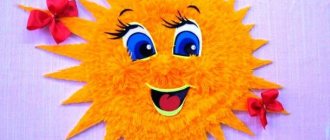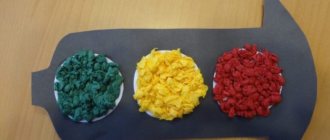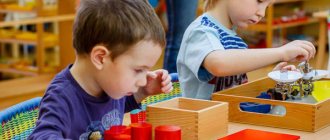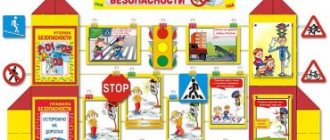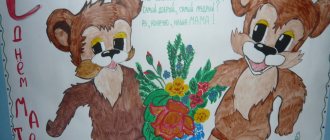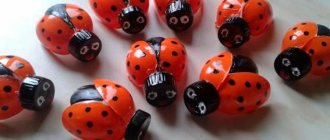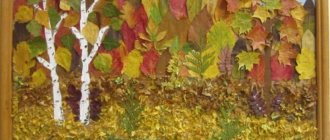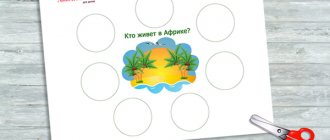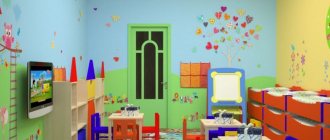Montessori materials
Today, the effectiveness of the Montessori method of developing and teaching children is beyond doubt.
Observing the games of children and their natural development, the famous scientist and philosopher Maria Montessori created a unique system of raising children, based on the idea of motivating a child for self-development and self-knowledge. Each baby is unique and from birth strives for independence, and the task of adults is to help him discover his capabilities - the scheme of work with children in Montessori schools - schools that follow the methodology of the greatest humanist teacher - is built on this principle. In addition, educational institutions of this type use didactic material developed by the creator herself and intended for the development of fine motor skills and sensory skills of children.
Montessori didactic material
Maria Montessori's catalog of games and manuals is quite diverse. After all, the teacher dedicated her entire life to teaching children, and through trial and error she selected only the best and most effective exercises, games and materials. She took into account every detail. The comfort of the furniture, the proper organization of space, the observance of rules and order, the age of the children - not a single smallest detail was left without her attention.
What can we say about the “golden material of Montessori” - games and didactic educational materials that are used by supporters of the method to this day. Modern toys are created on their basis, and handicraft mothers make analogues for their children with their own hands. For example, modern puzzles, sorters, educational rugs - all this is the legacy of Maria Montessori. They contribute to the development of personality, help to independently explore the world around us, as well as systematize already acquired skills and knowledge. Focusing on the development of fine motor skills and sensory skills, the creator sought to develop the spirituality of children, because in her opinion, this is the basis of a full-fledged, free and self-sufficient personality.
To have a clearer idea of the materials for Montessori classes, let's look at a few examples:
- Various bags with filling. Cereals, peas, beans, and polystyrene foam are used as the latter. Their task is to develop the tactile and visual abilities of children.
- Jars with different fillings. Develops the hearing abilities of the little ones.
- A chest of secrets will surely appeal to older children. A simple device in the form of a box with various jars, each containing a surprise (for example, a small toy), will teach your baby how to open and close containers, and will also help develop his hands.
- Plastic “hungry” toys with a hole in the mouth. Of course, the baby will not refuse to help his “friend” and will gladly feed him small beads or peas. This exercise trains the eye, hand, attention and patience.
- Finger paints are a brilliant invention; many children really like them. Well, drawing itself is undoubtedly a fascinating and useful activity for children of all age categories.
- Cut pictures are a kind of mini-puzzles.
- Objects of a certain group that differ in color, shape or size. For example, three Christmas trees are laid out in front of the child and mixed circles are given: red, blue and yellow. The child’s task is to decorate each Christmas tree with circles of a certain color.
- Insert frames. Created like a simple construction set, usually wooden, they train optical-spatial thinking, fine motor skills and coordination. There are various inserts with images of animals, cartoon characters, vegetables and fruits, and geometric shapes.
- Pink Tower. Introduces children to the concepts of “big” and “small”, “less”, more.
Freedom of the child and the role of the educator
By the role of a teacher we will understand not only employees of child care institutions, but also the child’s parents and other adults who decided to use this method.
Montessori invites the teacher to master the consciousness of a scientist. Take on a more specialized role as an observer of the child (like a scientist in a laboratory observing microorganisms through a microscope) rather than simply monitoring his safety and assigning tasks.
“I firmly believe that we should cultivate in our teachers the spirit of a scientist, and not instill in them the skills of mechanical work.”
The teacher's task is to meaningfully monitor the child. The teacher should not impose knowledge or purposefully teach the child. He can sometimes only slightly direct the child’s actions (without nevertheless allowing him to feel his presence). And he can help only at the request of the child himself.
"Wait and watch." This is the motto of the teacher. Let's wait and be always ready to share with the child his successes and difficulties. He himself will ask us for help, and then we will have to respond joyfully. Let us be patient as we watch his slow progress. And we will show joy and enthusiasm when the child wants to share his successes with us. If we could say, “We have respect and interest in the actions of our children, we treat them as we would like to be treated,” then we would certainly understand the great principle of education and would undoubtedly become a model good teachers."
The child himself is given the task of being free and doing whatever he wants in the environment, without disturbing other children. But even so, the teacher should not be a passive observer, but should be an active scientist:
“The freedom of the child must have a limitation, the criterion of which is the collective and its interests, and a form that is commonly called good upbringing. To do this, you need to study each child individually, finding out what in his behavior can cause offense and irritation to others, and what inclinations can subsequently lead to rude behavior. In all other respects - in all manifestations that have some benefit - whatever they may be and whatever form they are expressed in - everything should be allowed, but with mandatory supervision from the teacher.”
In such a free environment, the child learns and develops independently, through Montessori materials (parents call them “Montessori toys”), which contain self-learning functions.
The classic Montessori group consists of children from 2 years 8 months to 6 years. All children study in the same group, not separated by age. This is a good solution, since the younger ones learn from the older ones, take from them examples of behavior, actions with objects, etc.; and the elders learn to teach the younger ones, showing sensitivity and care, they take on the role of leader and mentor. This interaction helps establish a friendly atmosphere in the group.
Pros and cons of the technique
When considering the Montessori method, there are several main disadvantages that critics mention:
- After learning under this system, it may be difficult for a child to fit into the school community and follow the rules. This is due to the fact that the Montessori method implies free movement around the classroom and independent choice of activities.
- Groups of different ages. According to educators who criticize Montessori theory, elders will always dominate and suppress younger ones who interfere with them.
- Refusal of fairy tales and poems. Maria Montessori considered fairy tales useless, since they only teach to escape from reality into fantasy.
- Distraction from social reality. Kindergarten students learn to do what they want and some of them rarely work in a team. Moreover, the methodology involves the use of too many objects that create an artificial environment, which is why adaptation problems may arise when studying in primary school.
Note! But the advantages can overshadow the disadvantages of the system. The main advantage is that the child gets used to learning independently and constantly strives for development. In this case, the child is not criticized, and punishments are completely excluded. The Montessori method teaches order and respect for others from early childhood.
Lesson in a Montessori classroom
Another advantage of the system is that students begin to write and read earlier. At the same time, teachers apply an individual approach to each child, taking into account his abilities and needs.
Interesting! To work with this system, a teacher can take a short training course.
Another advantage is the formation of groups not by age, but by interests. This increases interest in the learning process itself. The technique also implies the development of independence and the ability to make decisions. Despite all the pros and cons of the Montessori system, this approach encourages students to engage in self-development of their own free will, and not under compulsion.
Drawing lesson on the topic “Portrait of Mom” in preparatory groups of preschool educational institutions
Matching games
Matching games are the most popular Montessori activities for ages 1 to 3. The main types are:
- Activities with colors - you can offer your child a cardboard circle with multi-colored sectors and clothespins of the same shades. The child must independently choose his own clothespin for each sector.
- The game can be combined with the help of mom. For example, invite your child to sort washed socks into pairs.
Dances of the peoples of the world for children: Indian, Irish, Chinese dances
This group of classes develops logic and attention.
Games with colors
Montessori Sensory Development Ideas at Home
Despite the fact that Montessori centers use specialized kits for the development of children, it is not difficult to create a game that enriches a child’s sensory experience.
- Animal competitions. Discuss with your child how different animals move and try to organize a competition: draw a start and finish line and ask them to run sideways like a crab, hobble like a bear, or jump like a hare.
- Modeling. Kinetic sand, salt dough, plasticine and clay perfectly develop a child's tactile sensitivity. You don’t have to try to create a masterpiece right away: just learn how to roll balls, flatten them into pancakes, stretch them into sausages, squeeze them and watch how the material seeps through your fingers
- Draw with crayons on the pavement and play hopscotch. Like the previous exercise, this trains not only the senses, but also the child’s coordination.
- Game of silence. Is it just not interesting to remain silent anymore? Invite your child to remember 5 different sounds that he heard during a minute of silence (car horn, bird sounds, people talking, a dropped pencil, etc.)
- Treasure hunt. Draw a list of objects that your child should find during your next walk (a long rough pine cone, a red leaf, a yellow leaf, a dry branch, etc.). Don't forget to take a pen with you to cross out what you find.
- Drawing with stamps, fingers, brushes and even cotton swabs. It is difficult to overestimate the impact of free creative activities on a child’s development.
- Guess the smell. Place items with different scents in opaque boxes: your favorite shampoo, orange peel, a little vanilla, dried cloves, fried cutlet. Organize a competition for the keenest sense of smell.
- Experiment with musical instruments: xylophone, glucophone, kalimba, drum, tambourine, shaker, pipe. It is not necessary to immediately enroll in a music school to introduce your child to music.
- Guess the product by taste. Blindfold your child and ask him to guess what's for lunch today.
- Let your child walk barefoot more often, because there is a whole world under his feet: sand, lawn, stream, pebbles.
Montessori games for early development: small objects
Transferring small objects (coins, beads, pebbles) from one vessel to another using tongs or a spatula is a rather difficult task for small fingers. But it develops the child’s fine motor skills well.
Kindergarten program for developing attention
Beans, buckwheat, rice and other cereals are also good for playing with small objects.
Sensory development
conclusions
The first three years of a child’s life are the age at which the child has not yet realized himself as an individual and acts largely unconsciously. However, it is at this age that personality begins to form, and the actions of adults will largely determine how the baby will grow up.
Surround your child with love and respect in order to give him the most important things for harmonious development. Try to keep a balance between a variety of activities and overstimulating the child with an excessive number of toys and decor. Remember that the most important thing is not things and sets, but your relationship with your baby and his inclusion in the life of the family. It is respect and recognition of the child as an equal member of the family that dictates all other rules of Montessori education.
